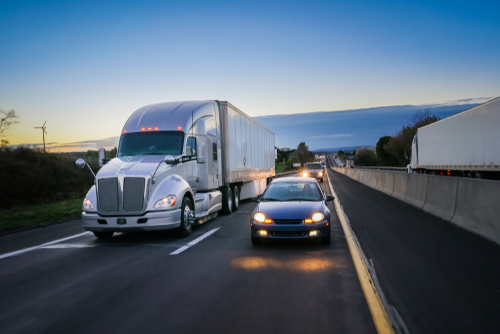The National Highway Traffic Safety Administration (NHTSA) is currently exploring the need for a side underride guard requirement in commercial trucks. Side underride guards are safety devices installed on the sides of trucks to prevent passenger vehicles from sliding underneath the truck in the event of a side collision. This issue has gained significant attention in recent years due to the serious injuries and fatalities that can occur as a result of side underride accidents. Here are some key points to understand about the NHTSA’s exploration of the side underride guard requirement:
Side Underride Accidents
Side underride accidents occur when a passenger vehicle collides with the side of a truck, and the front or side of the vehicle becomes wedged underneath the truck’s body. This can lead to devastating consequences, including severe head and neck injuries, decapitation, or even death. Side underride accidents are particularly dangerous because the vehicle’s occupants are exposed to the full force of the collision, with little protection from the vehicle’s safety features.
Current Rear Underride Guard Requirement
The NHTSA has already implemented regulations requiring rear underride guards on commercial trucks. Rear underride guards are designed to prevent passenger vehicles from sliding underneath the rear of a truck in a rear-end collision. While these requirements have been effective in reducing the severity of rear underride accidents, there is a need to address the risks associated with side collisions as well.
Safety advocates and organizations have been urging the NHTSA to consider implementing side underride guard requirements for commercial trucks. These advocates argue that side underride guards could significantly reduce the risk of injury or death in side collision accidents by preventing passenger vehicles from being crushed or wedged beneath the truck.
NHTSA’s Research and Evaluation
The NHTSA is actively researching and evaluating the effectiveness of side underride guards in preventing injuries and fatalities in side underride accidents. This involves studying crash data, conducting tests and simulations, and considering feedback from various stakeholders, including safety experts, manufacturers, and the public.
The NHTSA’s exploration of the side underride guard requirement aligns with its commitment to enhancing safety standards and reducing the number of serious injuries and fatalities on the roads. By addressing the specific risks associated with side underride accidents, the NHTSA aims to further improve the safety of commercial trucks and the protection of occupants in passenger vehicles.
Potential Benefits
The implementation of a side underride guard requirement could have significant benefits. It has the potential to prevent catastrophic injuries and fatalities by providing a physical barrier that prevents passenger vehicles from going underneath the truck. Side underride guards can absorb some of the impact energy, reduce the severity of the collision, and protect occupants in the passenger vehicle.
While side underride guards have shown promise in preventing injuries, there are challenges and considerations that need to be addressed. These include the design and effectiveness of the guards, compatibility with different truck models and configurations, cost considerations for manufacturers, and potential impacts on truck aerodynamics and fuel efficiency.
Collaboration and Industry Involvement
The NHTSA is actively seeking input from industry stakeholders, including truck manufacturers, to develop effective side underride guard requirements. Collaboration between regulators, manufacturers, safety advocates, and other stakeholders is crucial to ensure that any requirements implemented are practical, feasible, and capable of significantly improving safety.
Raising public awareness about the importance of side underride protection and supporting advocacy efforts for improved safety standards can help drive change and push for the implementation of side underride guard requirements. Increased public awareness can also encourage manufacturers to voluntarily adopt side underride guards before any regulatory requirements are in place.
Contact an OBX Personal Injury Law Firm
If you or a loved one have been injured in a truck accident, a North Carolina truck accident attorney can help you pursue legal action against the parties liable for the crash and injuries. Shapiro, Washburn & Sharp have been advocating for injured clients for more than 35 years and will work diligently to get you and your family the financial justice you deserve. Call our office to schedule a free case evaluation.
RELATED CONTENT
- Trucks, Seizures & Big Rig Crashes
- Best Guide to Truck Accident Injuries
- The Major Kinds of Truck Accidents
